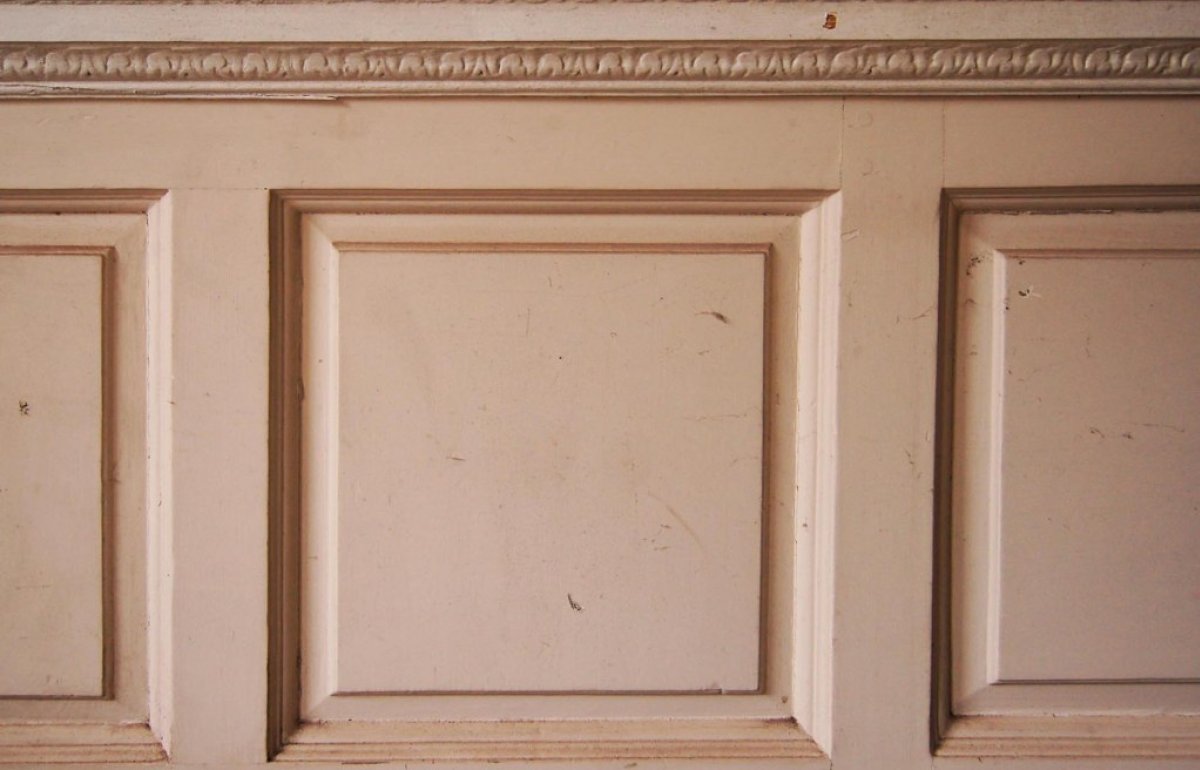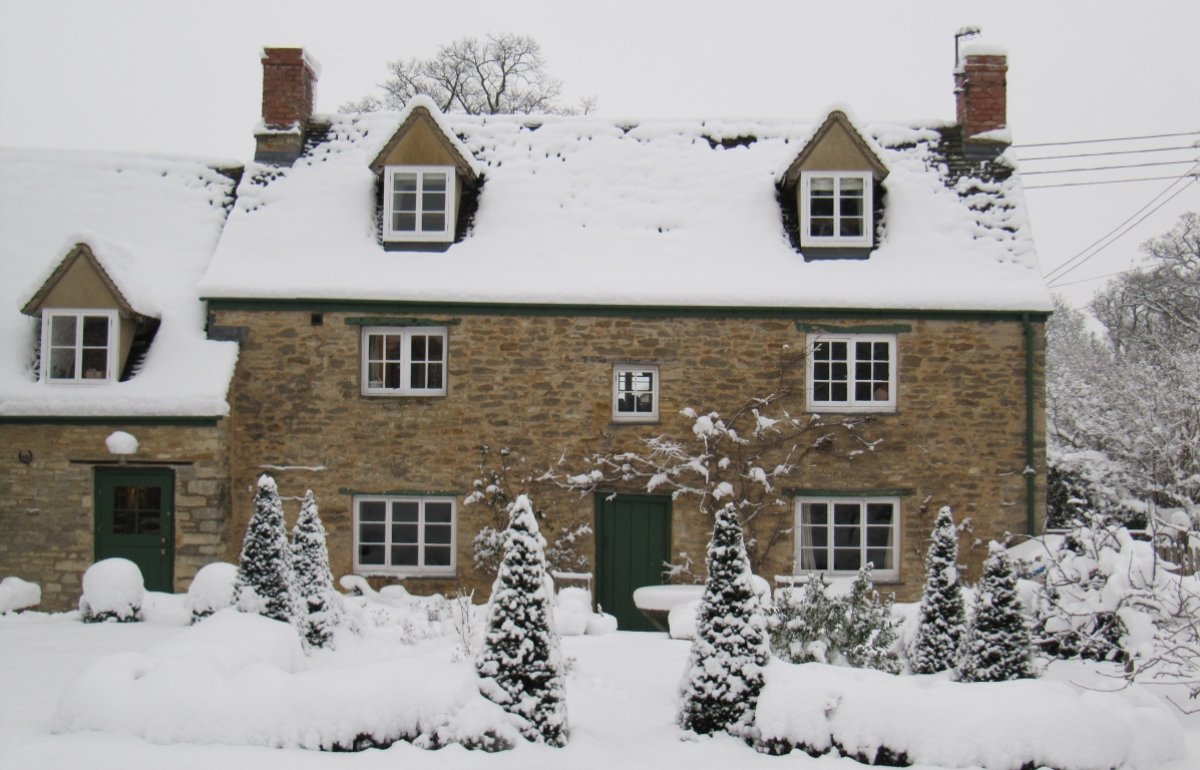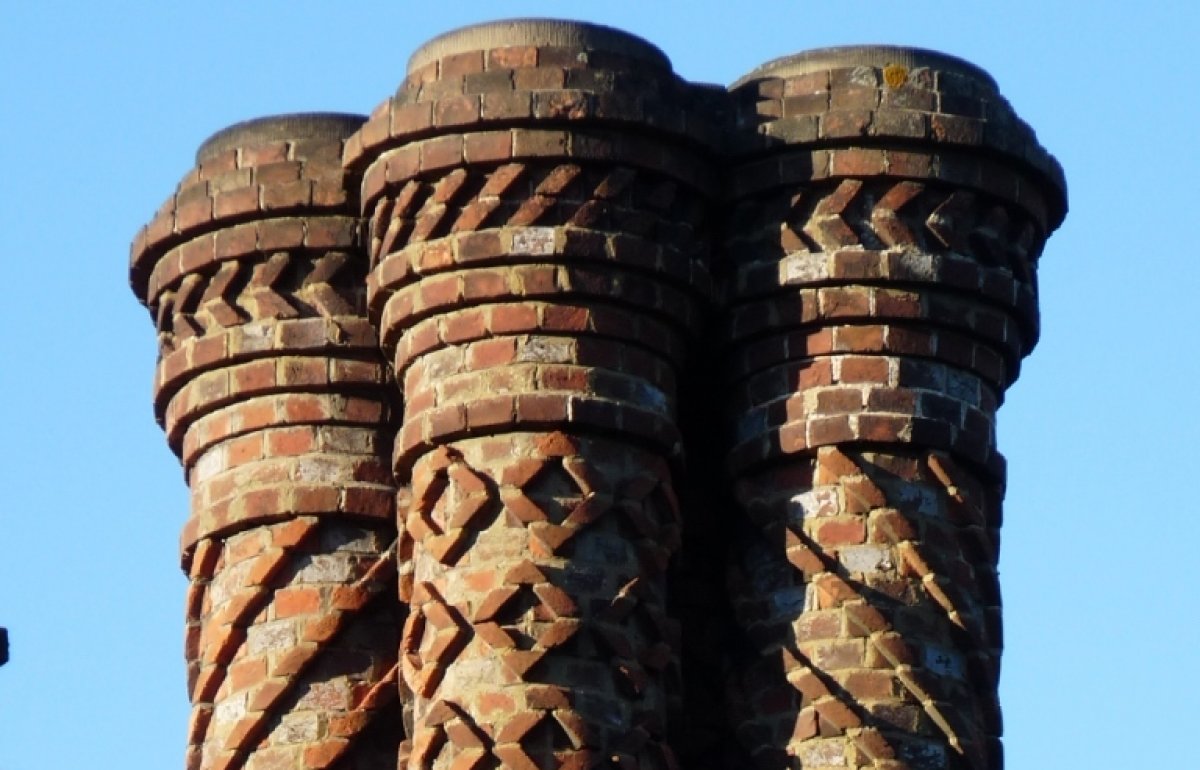Rainwater penetration
Damp is the most common and damaging cause of deterioration affecting old buildings and rain penetration accounts for much of this. Basic preventative measures are often neglected, and problems compounded by misdiagnosis and unsuitable modern treatments.
What’s the definition of rain penetration?
In the context of buildings, rain penetration refers to the ingress rainwater above ground at various points in the external envelope of the construction, that is through roofs, walls, chimneys and openings such as windows and doors. This includes spillage from gutters and downpipes. Water penetrates buildings by various mechanisms, for example, gravity, wind pressure and capillary action. It not only damages the fabric but also creates unhealthy conditions for occupants, together with less visible problems like poorer thermal performance.
Rain penetration is distinct from other moisture-related problems, such as condensation and rising dampness, which require different solutions.
Isn’t rain penetration an inherent problem with old buildings?
Not normally but it is common, particularly due to neglected maintenance or previous inappropriate work. Exposed parts of buildings such as roofs, chimneys, parapets and sometimes south-westerly facing walls are most susceptible to moisture ingress, especially where access for maintenance is difficult. Something as straightforward as a slipped tile can cause significant damage, as can leaks from parapet and valley gutters not cleared of autumn leaves.
Historically, walls were widely given extra protection from the rain with lime render (or possibly tile-hanging, weatherboarding etc), and good weatherings such as projecting cills, string courses and pentice boards were provided. Dampness has been caused by the stripping of lime render from Victorian times onwards, or, as described below, application of incompatible later materials, including cement renders. Additionally, where patios and paths are laid up to walls, inadequate drainage or rainsplash commonly soaks them.
How can I control rain penetration in old buildings?
Remedies must aim to cure dampness by addressing the cause or, failing this, managing it by treating the symptoms. In some cases, dampness can be considered insignificant and requires no remedy. Applying staged remedies can help accurately diagnose the cause of dampness. Before embarking on extensive work, therefore, the first step may entail nothing more than basic maintenance, such as clearing a blocked gulley.
Work should generally be like-for-like but modifications are sometimes justified. Where rain seriously penetrates an exposed wall, for instance, the reinstatement of a lime render or use of traditional tile-hanging, weatherboarding etc might be considered. Partial treatment at first floor level (including any gables) may be more acceptable aesthetically, though, than a wholesale covering. Alternatively, some circumstances permit the installation of a ventilated dry lining system internally.
Will sealing old buildings help stop rain penetration?
No, this is normally disastrous. Old buildings need to ‘breathe’. Whereas modern buildings rely on excluding water with a system of barriers, buildings that pre-date c1919 are usually constructed of absorbent materials that any allow moisture that enters to evaporate back out – the ‘raincoat’ and ‘overcoat’ effects respectively. Attempts to seal old buildings with hard cement pointing and render, tanking, plastic-based paints, colourless water-repellent treatments and spray-on roof foams entrap moisture and are regular causes of deterioration. Ideally, such impervious materials should be removed but this may not be possible without causing further damage.
Be wary of written guarantees, which are often loaded with ‘get-out’ clauses and may have no insurance backing. The right approach from your contractor coupled with good workmanship is your best warranty.
Burkinshaw, R and Parrett, M (2003) Diagnosing Damp, Coventry: RICS Business Services Ltd
Burkinshaw, R (2009) Remedying Damp, Coventry: RICS Business Services Ltd
English Heritage (2014) Building Environment, Practical Building Conservation, Farnham: Ashgate Publishing Ltd
Trotman, P, Sanders, C and Harrison, H (2004) Understanding Dampness: Effects, Causes, Diagnosis and Remedies, Garston: HIS BRE Press



